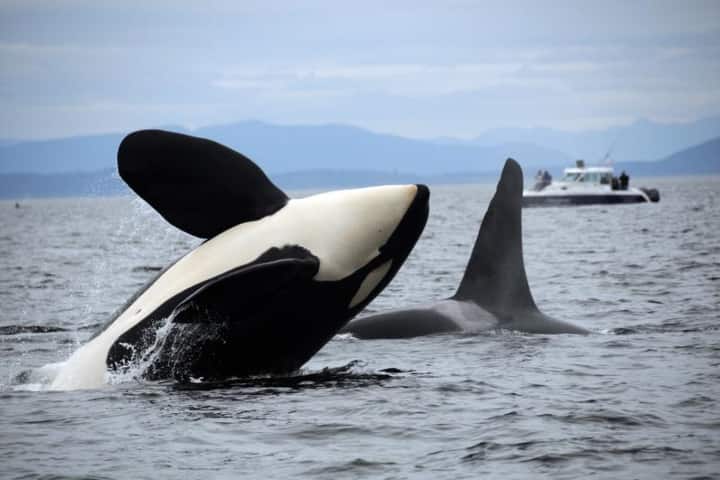

Curious to know the reason for decline in Southern Resident killer whales, scientists did genome sequencing (Pic. Courtesy Twitter/@NOAAFisheries)
The worst fears of scientists that the number of a small group of Southern Resident killer whales living off the northwest coast of North America in the Pacific Ocean is shrinking has been confirmed by a study.
As per a livescience.com report the researchers for long suspected inbreeding as the reason for this decline and this has come true according to genome sequencing.
The orca group studied which included 100 living and dead whales – 73 of which are still alive – were found to have “lower level of genetic diversity” and “higher levels of inbreeding”.
Details of the study were published in the journal Nature Ecology and Evolution last month.
Confined geographic range of this group between British Columbia and Oregon has been suggested as one of the causes for their decline. Commenting on this, Michael Ford, the study’s co-author and a research scientist with the National Oceanic and Atmospheric Administration’s Northwest Fisheries Science Center in Seattle said: “They’re a little more genetically isolated from other populations. There’s also less episodic interbreeding between [them and] other populations.”
As per the results of sequencing it was found that many of the whales had been born between a parent and one of its children while 20 per cent of them were bred between first cousins.
The killer whales in general start to procreate when they are 10 years old and they reach the prime in reproduction in early 20s but the Southern Resident orcas had “less than half the chance of surviving through their prime years to reach 40, compared to the least inbred individuals” mentioned a statement issued by the scientists.
Also, females from a highly inbred group have an average of 1.6 calves while those from lowest level of inbreeding have 2.6 offspring in their lifetime.
Scientists did stress that other factors also could be contributing to low population growth. Pollution and human activity like boat traffic can also impact them.
Highlighting this, Hope said: “Some of their core habitat is in an urban environment with a lot of small boat and large ship traffic that may directly disturb them or impact their ability to effectively hunt for salmon. They’re also known to be fairly contaminated with both legacy and more recent contaminants.”
Scientists discovered that other populations of orca are not impacted as much by these contaminants. Even though these factors may be playing a role in the case of Southern Residents but proving that is tough.
Sub Lieutenant Astha Poonia officially became the first woman to be streamed into the fighter…
As Israel awaits Hamas's response on Friday to the latest proposal for a hostage release…
Deputy Chief of Army Staff (Capability Development and Sustenance), Lieutenant General Rahul R Singh, on…
A report on Bangladesh's media landscape has revealed that the restrictive laws and political press…
Prime Minister Narendra Modi has said that India is actively working on creating a comprehensive…
The Indian Chamber of Commerce (ICC) on Thursday hosted the 14th India Minerals and Metals…